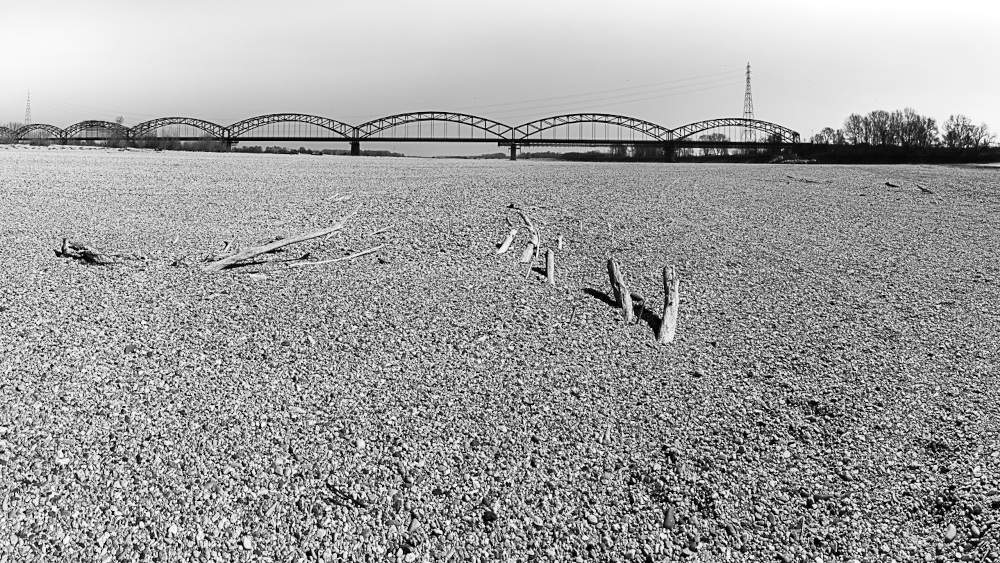The photographic exhibition Deserto Italia by Stefano Torrione opens at the MUSE - Museum of Science in Trento on June 16, 2023, on the occasion of World Desertification and Drought Day. Alps without snow, rivers without water, lakes at their lowest, but also intense rainfall and flooding: between droughts and floods, the impacts of the climate crisis are now a reality and Italy is already particularly exposed to them, also because it is located in the climate hotspot of the Mediterranean basin.
On view until August 20, 2023, the exhibition recounts through twenty-two black-and-white shots revolving around the concept of desert the Italian landscapes, from North to South, where the wounds inflicted by the climate have been most evident.
Over the course of 2022, Stefano Torrione walked through glaciated, river and lake areas, photographing the most significant areas. In 16/9 format and black and white, the shots highlight the effects on the territory of global warming and address the theme of “suffering beauty” as a sign of the drought-stricken landscape. Stefano Torrione’s photographic research work on the Italian landscape is still ongoing and will conclude at the end of this year. At the center of his work and research is the concept of “desert”: glaciers retreating and splitting, rivers drying up leaving sandy beds to emerge, lakes subsiding causing rocky bottoms to emerge. From the natural to the man-made, the research also extends to deserts caused by humans or for which the anthropogenic factor is a determining factor, such as areas of large fires or decommissioned ski resorts.
Drought is one of the most destructive natural disasters in terms of loss of life: it occurs in phenomena such as global crop losses, forest fires, and water stress. Exacerbated by land degradation and climate change, drought is increasing in frequency and severity, with a 29 percent increase since 2000 and 55 million people affected by its effects each year. It is estimated that by 2050 drought could affect three-quarters of the world’s population. It is a global and urgent problem.
TheNational Research Council’s Institute of Atmospheric and Climate Science (CNR- ISAC) released preliminary data on temperatures recorded in Italy in 2022: the year 2022 was the hottest on record since 1800 and maximum temperatures also reached record levels, while precipitation was 30 percent below the average for the 30-year period 1991-2020, with minimum hydrometric levels for rivers and lakes and little storage in the form of snow in the Alps and Apennines.
The prolonged lack of rainfall was particularly severe for northwestern Italy, which is included in that belt of Europe that, from the Iberian Peninsula through France, Germany, Austria, Hungary, Romania and Bulgaria to the Black Sea, was gripped by the grip of drought during 2022, with serious repercussions on agricultural production.
The winter just past and much of spring (2023) were no less, as also confirmed by data provided by the EDO - European Drought observatory. Today Italy is facing ahydrogeological and water emergency: at risk are the environment, the economy, and employment.
The exhibition has the patronage of Autonomous Province of Trento.
For info: https://www.muse.it/
Image: Lombardy, Pavia - The Po River running dry near the Gerola Bridge.
 |
| Desert Italy, the photo exhibition at MUSE in Trento on the impacts of the climate crisis |
Warning: the translation into English of the original Italian article was created using automatic tools. We undertake to review all articles, but we do not guarantee the total absence of inaccuracies in the translation due to the program. You can find the original by clicking on the ITA button. If you find any mistake,please contact us.